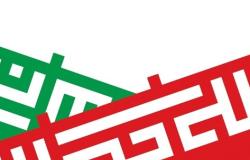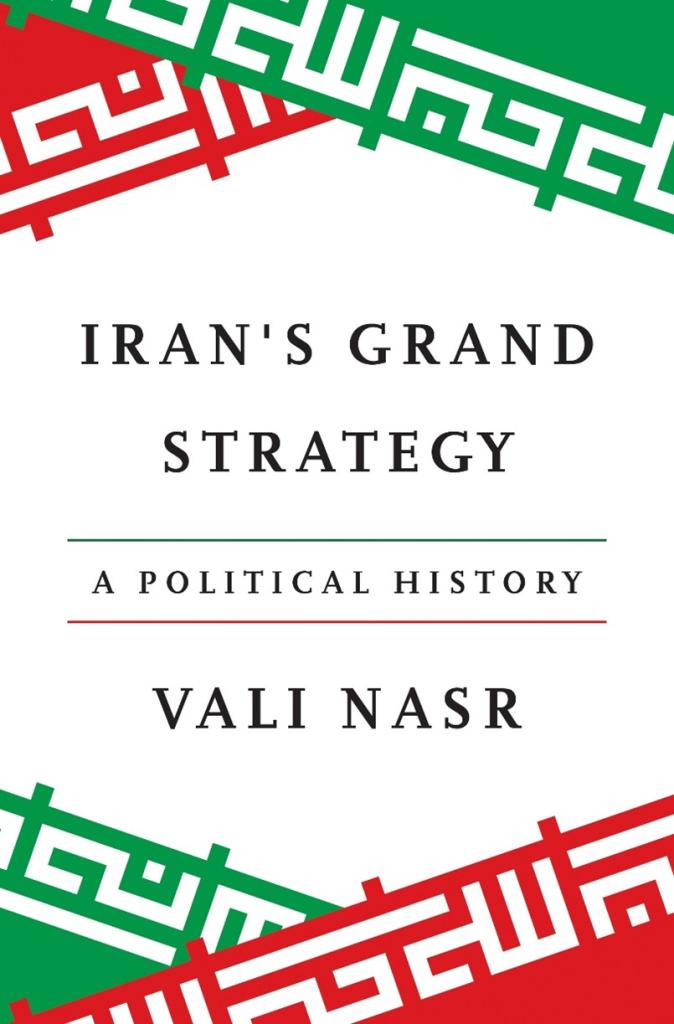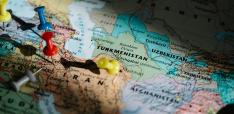Book Review - Iran’s Grand Strategy: A Political History by Vali Nasr

Iran’s Grand Strategy: A Political History by Vali Nasr. Princeton, NJ: Princeton University Press, 2025. 408 pp., £30 hardcover 9780691268927, e-book 9780691268934
Vali Nasr's “Iran's Grand Strategy: A Political History” offers an incisive examination of the enduring principles and evolving manifestations of Iran's national security vision over the past four and a half decades. This book explores how Iran's grand strategy, fundamentally a strategy of resistance, has not only shaped its international outlook and foreign policy but also profoundly shaped its state, society, and economy to realise its national aims. Nasr traces the historical roots and revolutionary crucible that forged this strategy, its consolidation under Supreme Leader Ali Khamenei, and the significant costs and challenges it now faces.
Comprising of eleven chapters, Nasr dedicates the first part of his book to the foundational period of the Islamic Republic, demonstrating how the early years of revolution and the devastating Iran-Iraq War became the crucible in which Iran's strategic identity was forged. The second chapter, “Seeking Revolutionary Independence,” meticulously unpacks the concept of “independence” (esteqlal) as a cornerstone of the Islamic Republic's national consciousness. Nasr illustrates that this principle was not merely an ideological tenet but a deeply ingrained response to historical experiences. He recounts how Ayatollah Ruhollah Khomeini, in 1978, personally added “independence” to a draft declaration of the revolution's goals, underscoring its paramount importance (p.35). The chapter highlights that the US hostage crisis (1979-1981) was particularly instrumental in entrenching anti-Americanism, not solely for ideological reasons, but due to national security concerns and the perceived threat of a repeat of the 1953 coup that was orchestrated by the United States and the UK (p.38, p.42). The initial absence of a clear foreign relations vision for the revolution meant that early foundational ideas, often an alignment of left-leaning anti-imperialism with the revolution's religious core, served as the prism through which the international system was viewed (p. 52).
 Chapter 3, “The Struggle to Win the Revolution,” details the intense internal power struggles that defined the revolution's early years and consolidated clerical authority. Nasr elucidates how the nascent Islamic Republic systematically eliminated economic power centres and propertied segments of society through nationalisation and wealth redistribution, often influenced by Khomeini's populism and exposure to socialist interpretations of Islam (p. 59). Crucially, this chapter discusses the fierce competition between the secular Left and the religious Right for control of the revolution, notably during the hostage crisis, where controlling the hostages became a determinant of factional power (p. 65, 69). The ultimate defeat and elimination of the Left by 1982, and subsequent executions, are presented as grim but clear examples of how these struggles were entwined with the consolidation of the Islamic Republic (p. 114). This period shaped the state's conviction that geopolitical independence and power projection were attainable through the realisation of secular ends, tied to Islamic principles (p. 59).
Chapter 3, “The Struggle to Win the Revolution,” details the intense internal power struggles that defined the revolution's early years and consolidated clerical authority. Nasr elucidates how the nascent Islamic Republic systematically eliminated economic power centres and propertied segments of society through nationalisation and wealth redistribution, often influenced by Khomeini's populism and exposure to socialist interpretations of Islam (p. 59). Crucially, this chapter discusses the fierce competition between the secular Left and the religious Right for control of the revolution, notably during the hostage crisis, where controlling the hostages became a determinant of factional power (p. 65, 69). The ultimate defeat and elimination of the Left by 1982, and subsequent executions, are presented as grim but clear examples of how these struggles were entwined with the consolidation of the Islamic Republic (p. 114). This period shaped the state's conviction that geopolitical independence and power projection were attainable through the realisation of secular ends, tied to Islamic principles (p. 59).
Chapters 4 and 5 form the core of Part I, asserting that the Iran-Iraq War (1980-1988) was a defining event that fundamentally rewrote Iran's understanding of national security, domestic politics, and governance. Nasr describes the war, often termed “Sacred Defense,” as an existential threat that compelled the new republic to unite and rely solely on its own resources, driven by religious and ideological fervour and patriotism (p. 74, 79). He notes Khomeini's initial balancing of Islamic universalism with the patriotic defence of Iran, even allowing secret military cooperation with Israel (p. 110). However, Khomeini's subsequent decision to prolong the war into Iraq, aiming for Saddam Hussein's overthrow, set an expansionist precedent in Iran's strategic culture (p. 86). The war led to the rise of the Islamic Revolutionary Guard Corps (IRGC), which adapted through guerrilla tactics and “human wave attacks,” fuelled by intense ideological passion and a culture of martyrdom (p. 108). Nasr explains that the immense human cost of the war and the sacrifices of “boy soldiers” solidified a strategic tool that fused Iranian identity with Shiism for national protection. These chapters argue that the war entrenched vital lessons of self-reliance, ideological vigilance, and deep distrust of international agreements, which continue to shape Iran's strategic thinking (p. 79). Nasr observes that the state actively propagates the narrative of resistance and sacrifice through education and media, linking it to the imperative of ideological fidelity and the celebration of martyrs to ensure its endurance (p. 123).
Part Two of the book shifts focus to Ayatollah Ali Khamenei's leadership and the evolution of the grand strategy of resistance after Khomeini's death. Chapter 6 explores the critical juncture Iran faced after the Iran-Iraq war. Nasr highlights the emergence of a “Thermidor” period, marked by a struggle between revolutionary fervour and a desire for normalcy, with national security at its core (p. 130). This chapter traces the rivalry between pragmatism, championed by President Akbar Hashemi Rafsanjani, who advocated for economic development and engagement with the West, and the ideological resistance solidified by the new Supreme Leader, Ali Khamenei (p. 133). Khamenei, lacking Rafsanjani's clerical prominence, redefined the state's core mission around resistance and “sacred defense”, consolidating absolute authority to protect the state's ideological foundations (p. 135). This period also saw the conservative elite forcefully respond to calls for religious and political reform, ensuring the perpetuation of a rigid ideological line (p. 154).
Chapters 7 and 8 elaborate on Iran's proactive regional strategy. Nasr describes “forward defense” as a military doctrine driven by the reality of Iran's strategic vulnerability as a Persian Shia country surrounded by Arab and Sunni rivals. This strategy involves projecting influence into the Arab world—Iraq, Syria, Lebanon, and Yemen—through alliances and proxies, collectively known as the “Axis of Resistance,” to confront US and Israeli influence away from Iran's borders (p. 176). Nasr explains how Iran leveraged existing Shia popular piety and devotion to shrines, particularly through events like Arbaeen, to foster a transnational Shia community that supports its regional reach. (p. 172)
Chapter 10 examines Iran's nuclear programme as a pivotal element of its resistance strategy (p. 231). Nasr traces the programme's roots to the Pahlavi era but emphasizes its renewed importance post-Iran-Iraq War as a deterrent against external threats. He details the complex negotiations, particularly the Joint Comprehensive Plan of Action (JCPOA), and the strong opposition from hardliners within Iran who viewed it as a threat to anti-American vigilance. For these factions, the deal risked empowering moderates and undermining the “sacred defense” ideology. The chapter also highlights Iran's “look East” policy—deepening strategic and economic ties with China and Russia—as a response to Western pressure and a means of creating strategic depth in Eurasia to circumvent international isolation.
Finally, Chapter 11, “The Price of Resistance,” brings to light the significant domestic costs of this grand strategy. Nasr details how “maximum pressure” sanctions have severely impacted Iran's economy (p. 265), leading to contraction, rising poverty, and rampant inflation, particularly affecting the middle class. He notes Khamenei's characterisation of sanctions as a “blessing in disguise” for fostering an “economy of resistance” and self-reliance. However, Nasr also highlights the growing discontent among Iranians, who question the high cost of unbending resistance, exemplified by calls for compromise and improved Western relations. The chapter extensively discusses major protests, such as those following Mahsa Amini's death, as a profound “revolt against the domination of religious strictures” and a challenge to the state's rigid ideological positions, with some protesters directly rejecting the IRGC's justifications for foreign interventions. The declining voter turnout in recent elections further underscores the widening “yawning chasm between state and society,” challenging the consensus among conservatives and IRGC leaders on the way forward for Iran's grand strategy (p. 279).
Vali Nasr's “Iran's Grand Strategy” offers a compelling and nuanced political history, revealing that Iran's deep-seated strategy of resistance is complex – due to its unique history, revolutionary experiences, and an enduring quest for independence and flourishing. The book demonstrates how this strategy, though rooted in secular aims of national security, has profoundly shaped Iran's internal dynamics and external engagements, continually adapting to threats while facing increasing domestic pressures for change.
Rahana Sherin K V is a PhD Scholar at MMAJ Academy of International Studies in Jamia Millia Islamia, New Delhi.


